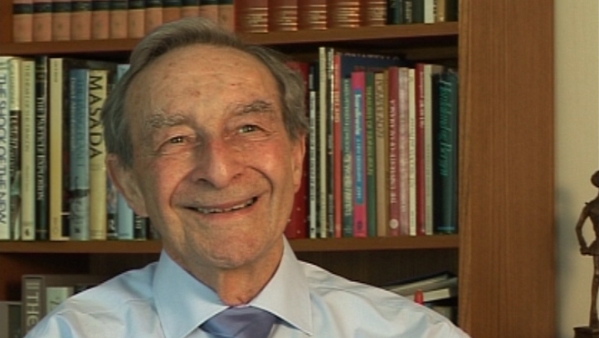NEXT STORY

Atomic weight: mass or weight?
RELATED STORIES

NEXT STORY

Atomic weight: mass or weight?
RELATED STORIES



So, let’s the return to the Atomic Weights Commission. The net result of these musings is that it became clear to us on the Atomic Weights Commission, increasingly from 1967 onwards, that one could no longer preserve the situation of atomic weights being constants of nature. They certainly weren’t, there are too many variables, and they were well within the variation that a careful experimenter might have. So what to do with the atomic weights? What we did to start with was to put footnotes, and if from ‘67 onwards – 1967 onwards – you read our bi-annual reports, you’ll… in the atomic weights which are published by the IUPAC [International Union of Pure and Applied Chemistry], you’ll find that there are footnotes, and one of the footnotes is that the atomic weight is variable, either for geographical reasons, or for inadvertent or undisclosed reasons.
And the inadvertent is because, paradoxically, the more you purify some things, the more you vary the atomic weight of what you’re taking off. The other is that of course they may have been altered for reasons of industry or atomic energy and so forth. So one had to be careful and we flagged that up. But the situation became worse and worse because experimenters were getting more and more precise in their measurements and so now, for the first time, when you look up your most recent atomic weights table, you’ll find not a number, or not only the most probable number, but you will find a range given. So if you want the atomic number [sic – should be weight] of boron, you are given a range within which normal samples will be found. And if you want a more accurate one, you jolly well have to go and find out what the atomic weight of your sample is, which is a big ask, of course, but you can get it... if necessary you get a national lab to do it for you for a price. But that is a complication which has crept into things and it becomes more and more important when many of the effects which modern technology depend on, will depend on a particular isotope. And so you want to make sure that the concentration is of that ‘one’.
Norman Greenwood (1925-2012) was born in Australia and graduated from Melbourne University before going to Cambridge. His wide-ranging research in inorganic and structural chemistry made major advances in the chemistry of boron hydrides and other main-group element compounds. He also pioneered the application of Mössbauer spectroscopy to problems in chemistry. He was a prolific writer and inspirational lecturer on chemical and educational themes, and held numerous visiting professorships throughout the world.
Title: The Atomic Weights Commission publicises atomic weight changes
Listeners: Brian Johnson
Professor Brian FG Johnson FRS, FRSE, FRS Chem, FAcad Eu, FAS. Professor of Inorganic Chemistry University of Edinburgh 1991-1995, Professor of Inorganic Chemistry University of Cambridge 1995-2005, Master Fitzwilliam College Cambridge 1999-2005. Research interests include studies of transition metal carbonyls, organometallic chemistry, nano- particles and homogeneous catalysis. Professor Johnson is the author of over 1000 research articles and papers.
Tags: Atomic Weights Commission, 1967, IUPAC, International Union of Pure and Applied Chemistry
Duration: 2 minutes, 49 seconds
Date story recorded: May 2011
Date story went live: 25 November 2011